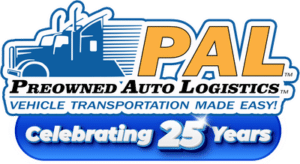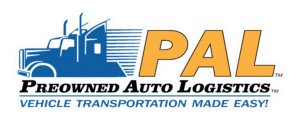What to Expect During the Auto Transport Process: Timeline & Communication Tips
It’s normal to feel overwhelmed when preparing to ship a car across state lines, especially if it’s your first time getting an out-of-state vehicle transported. Whether you’re moving for a new job, buying a car from another state, or sending a vehicle to your child’s college town, the basic auto transport process is the same. Knowing how an auto transport company works and what to expect, in particular, with the vehicle shipping timeline, can help ease your worries and make the entire process of shipping a vehicle less intimidating.
The auto transport timeline is based on three main factors:
- Your personal preparation for the shipment
- the right set of expectations, and
- Effective communication with the transport carrier.
While you likely worry about the safety of your car in transit or whether you will have your vehicle on time, these concerns could be alleviated, and the whole shipment made easier, just by working with a great auto transport service.
Preowned Auto Logistics emphasizes the importance of understanding the auto transport process for a better shipping experience. This guide outlines the stages of vehicle shipment, detailing what occurs from booking the transport order to delivery, providing real-time insights into the process.
Step 1: Booking Your Auto Transport
Car shipping begins with researching carriers and quotes. Call a few reliable auto transport services to learn pricing. A trustworthy auto transport company will need your car make and model, the location of pickup and delivery, the dates you prefer, and whether you want enclosed or open transport.
Compare quotes and check credentials.
Here is something to keep in mind about car shipping: just because the price is the lowest doesn’t mean it’s the best deal. The pros we interviewed for this auto transport guide pointed out a few things to check before finalizing your carrier choice. First, you want to make sure the carrier is licensed through the Federal Motor Carrier Safety Administration (FMCSA). Any transport company should have a Motor Carrier (MC) number that you can search online.
Insurance is the second big hurdle. When it comes to auto transport, you want a company that has cargo insurance. A reliable auto transport service will carry an adequate amount of cargo insurance – ask the carrier for a copy of the insurance certificate before you book and read the fine print.
Open vs. enclosed transport
Open transport is cheaper and works well for most vehicles. Your car will be shipped on an open trailer with other cars, similar to a regular road trip, exposed to the elements and road debris.
On the other hand, if your vehicle is particularly valuable or if you have some sort of sentimental attachment, consider choosing enclosed transport. Though it comes at a premium, your car will be loaded and transported in a covered trailer, keeping it sheltered from weather, road debris, and other hazards. This option works well for classic cars, luxury vehicles, and high-performance cars.
Check reviews and secure everything in writing.
Before you seal the deal, look up online reviews and ratings. Check multiple websites and see what the consensus is – don’t fixate on that one bad review. Look for carriers that have good communication, deliver on time, and have responsive customer service. Remember that a few extra bucks with a company that has a solid reputation may be worth the investment.
Step 2: Preparing Your Vehicle for Transport
Preparing your vehicle for transport is crucial for its protection and for an efficient loading process. Start by washing your car inside and out. A thorough cleaning ensures that any pre-existing scratches, dents, or cosmetic issues are documented clearly with multiple photos from various angles.

Removing personal belongings
One of the essential tips for preparing a car for shipping is to remove your items since carriers don’t cover them for insurance purposes. Also, extra weight can create other issues. Take everything out of the glove compartments, center consoles, trunks, and hidden storage compartments. Only if necessary, you can leave behind items weighing less than 100 pounds inside the trunk. Even then, it’s a good idea to check with your carrier first, as many do not allow any personal items in the vehicle.
Fuel, fluids, and accessories
Make sure the fuel gauge reads a quarter tank or less. That’s enough fuel for loading, unloading, and moving the car around the yard as necessary. An empty tank only adds unnecessary weight, while a full tank is a fire hazard. Tire pressure should be at factory specifications, and no fluids should be leaking.
Taking photos of your vehicle
Take pictures of your vehicle at many different angles, including close-ups of any previous damage. Be sure to date the photos if you can. Having a record of your vehicle’s condition can help prove its pre-shipping condition in the event of damage. Some customers choose to walk around the car in a video before handing it over as added documentation.
Step 3: Understanding the Transport Timeline
When it comes to vehicle shipping, one of the most common questions we receive is “How long will it take?” While the answer is dependent on several factors, knowing the average timeframes can help you figure out how long it will take.
Average transport timeframes
In most situations, you can expect the following timeframes for door-to-door vehicle transport:
- Local shipping within the same state or to and from one or two bordering states: 1 to 3 days
- Regional shipping of 500 to 1,000 miles: 3 to 5 business days
- Cross-country vehicle transport from one coast to the other, which is 1,800 to 3,000 miles: 7 to 14 business days.
Factors influencing transport timing
While distance is the most obvious factor affecting transport time, it’s definitely not the only one. Expect weather-related delays, particularly in northern states during winter months or during hurricane season for Gulf Coast transport. Although it may take them a little longer to reach their destination, drivers will pause for wind and rain, but they will not drive the truck through a snowstorm or blizzard.
Route specifics will also affect the timeframe. Major north-south and east-west corridors between large metropolitan areas and cities will see a greater frequency of transport services, as carriers are able to load and fill their trucks with other cars and vehicles along the route.
Things to consider when determining transport timing
In addition to the vehicle pickup and delivery schedule, expect delays if there are more stops than pickup and delivery. Drivers will often have multiple shipments along their routes, often to locations actually along the way to your location. The more stops the truck has to make, the more time it adds to the truck’s travel.
Step 4: Pickup and initial communication
The actual auto transport starts with pickup. During the pickup window, the driver will call to provide an estimated time of arrival. Ensure vehicle access and provide space for the truck. Have a responsible adult with a valid license present.
Conducting the vehicle inspection
The driver inspects the vehicle with you or your representative. Existing damage is recorded on a Bill of Lading as the official condition report. Be sure to review this form and notate anything that should be added before signing. If you notice damage not listed, immediately point it out for inclusion.
Understanding the bill of lading
The Bill of Lading, a binding legal document, is crucial. It acts as a receipt, confirms pickup, recognizes the vehicle’s condition, and outlines auto transport terms. You keep one copy; the driver stores the other. At delivery, check your vehicle against the reference copy.
Take personal photos at pickup as well, in addition to the driver’s documentation. Multiple sources bolster your position during damage disputes.
Know communication expectations
Before departure, the driver will provide contact details for the trip. Some carriers offer GPS tracking; others call/text with updates. Discuss how auto transport communication unfolds so you know what to expect.
Step 5: Tracking and Staying Informed
Vehicle shipping is often completed weeks before the due date. Knowing where your vehicle is en route to you is beneficial for reducing stress and allowing for more accurate delivery planning. Most trustworthy auto transport services provide at least one method of tracking your shipment.
Available methods of tracking
GPS is increasingly popular in the auto transport industry. If your carrier has this technology on board, you will usually be provided with login credentials to access a portal with up-to-the-minute location information on your shipment. This allows customers to track shipment progress for themselves without relying on updates from the carrier.
But remember, not all carriers operate GPS tracking systems, nor is it necessary for your truck to transport your vehicle. If GPS is not provided, often the driver will call or text you at the halfway point on the route or at places where they will stop overnight.
How frequently to expect updates
How often are updates made on your shipment? Each company has its own frequency policy, but typically established auto transport companies will call or text the shipper and receiver about every two to three days through cross-country transport and call if there is a change in the anticipated shipping dates or a hold-up.
What about Delays?
Often, delays occur due to some act of nature over which neither you nor the carrier had any control. Scheduled routes could be disrupted due to a snowstorm, severe rains, fires, high winds, hail, or sleet. Or traffic accidents occur. Sometimes, the truck breaking down necessitates waiting for a repair truck to bring parts to them. In the case of unavoidable delays, carriers with good reputations will advise you immediately of the change and the anticipated timeframe needed for the delay.
If your vehicle’s arrival date changes, be flexible. If the carrier decides that a delay that you have experienced might be possible, do not get angry at this point.
Document everything!
Save any email or text messages sent in transit and keep a notebook journal listing the date and time of phone calls and notes made about what you spoke about with the office or dispatch. This journal document proves very helpful when it comes to settling any problem or dispute after delivery of the vehicle.
Step 6: Delivery and Final Steps
Just like during pickup, the driver will call you before arriving to schedule a specific time to deliver your vehicle. Ensure someone over the age of 21 is available to receive the car and complete the required paperwork.

Performing the delivery inspection
The driver will conduct another thorough inspection with you at the time of delivery. This is your chance to closely examine the vehicle and report any damage that may have occurred during transport. Compare the car with the Bill of Lading created at pickup and the side, high-resolution pictures you took at pickup. Check for damage on all sides, the roof, and undercarriage (if it can be seen). If the car is lower to the ground, look underneath and check the interior of the vehicle.
Taking note of any problems
If you note any new damage, mark “damage noted” on the delivery receipt before signing. You should take pictures of any damage found promptly. The driver must also note the damage on the paperwork. This step is crucial for insurance purposes later on.
After the inspection, sign the delivery receipt if everything looks good, or mark “damage noted” and make a claim. This paperwork is critical to keeping up with all your auto transport records. You will need these records if you have to file a claim or need to contact the broker/carrier later.
Every reputable carrier has insurance to cover transit damage as well as a system in place to handle claims. Although dealing with and resolving claims can take time, and the process sometimes seems complicated, acting quickly on your part will help the process and ensure a fair resolution.
Communication Tips for a Smooth Transport Experience
A successful cross-country vehicle transport experience relies on communication and trust between all parties. Open communication minimizes stress and enhances the overall process. To assist in accomplishing this, we’ve compiled a few vehicle shipping tips to help you maintain communication throughout your entire vehicle transport timeline.
Ask questions upfront when getting quotes.
Consider this: You receive a quote for $800, but where are you getting your vehicle?
- Do they have any hidden fees?
- Is that a quote that includes or excludes insurance?
- What is that company’s format for a Bill of Lading?
- What should you do if the price goes down?
- When will the driver call you?
- What time will the carrier arrive for pickup?
- What do you need to do to prepare?
These are just a few questions that you may or may not have thought of. Asking questions at this stage of your timeline gets you a clearer understanding and drastically cuts down on the chance of surprises down the road.
Stay available and responsive.
As shipping dates approach, your carrier and driver will likely reach out several times. Make sure to answer all calls and emails promptly and be flexible. Please confirm that all contact info is correct at the time of booking and notify the carrier immediately of any changes.
Keep everything in one place.
Keeping all your paperwork in the same place makes it easy to find everything. This might include your initial quote, dispatcher notes/sample contract, Bill of Lading, inspection photos, credit card statement, payment receipt, and email communication.
Be honest about your vehicle.
Disclose any mechanical issues, damage, or necessary modifications to your vehicle at the time of booking, and the carrier will help you make arrangements for an efficient pickup. If you surprise the driver with a broken winch or other issues at the time of pickup, it can lead to delays, back-and-forth calls, or the possibility of you needing to find your own alternative shipping method.
Set realistic expectations
Clearly set your expectations for yourself and your car. If you absolutely need your vehicle to arrive by a certain date, be sure to communicate this to the dispatcher at the time of booking. This allows them to set realistic expectations and convey them to the driver.
Be professional and courteous when things go wrong
The truth is that glitches happen. Mistakes sometimes occur. Getting angry and starting a screeching email or phone campaign will likely not resolve the issue any faster. Approach the mishap with an open mind and a willingness to find the best possible resolution within the timelines given.
Conclusion: Reduce Stress by Knowing What to Expect
What truly makes the experiences more manageable is a practical understanding of what to expect during the auto transport process. When you’re familiar with the shipping timeline, properly prepare your vehicle, and maintain open auto transport communication lines with your carrier, shipping your vehicle becomes less intimidating.
In a nutshell, the main points for a successful experience include:
- Selecting a trustworthy auto transport provider with proper licensing and insurance
- Thoroughly inspecting and documenting the vehicle’s condition
- Preparing for realistic pickup and delivery expectations
- Utilizing tracking and communication options for updates
- Conducting careful inspections during pickup and delivery.
Door-to-door vehicle shipping is influenced by various factors, including weather, route complexity, seasonality, and the carrier’s schedule. Partnering with a knowledgeable company like Preowned Auto Logistics enhances the experience, ensuring clear communication and careful handling of your vehicle. For a seamless transport experience, contact Preowned Auto Logistics for a free quote.




